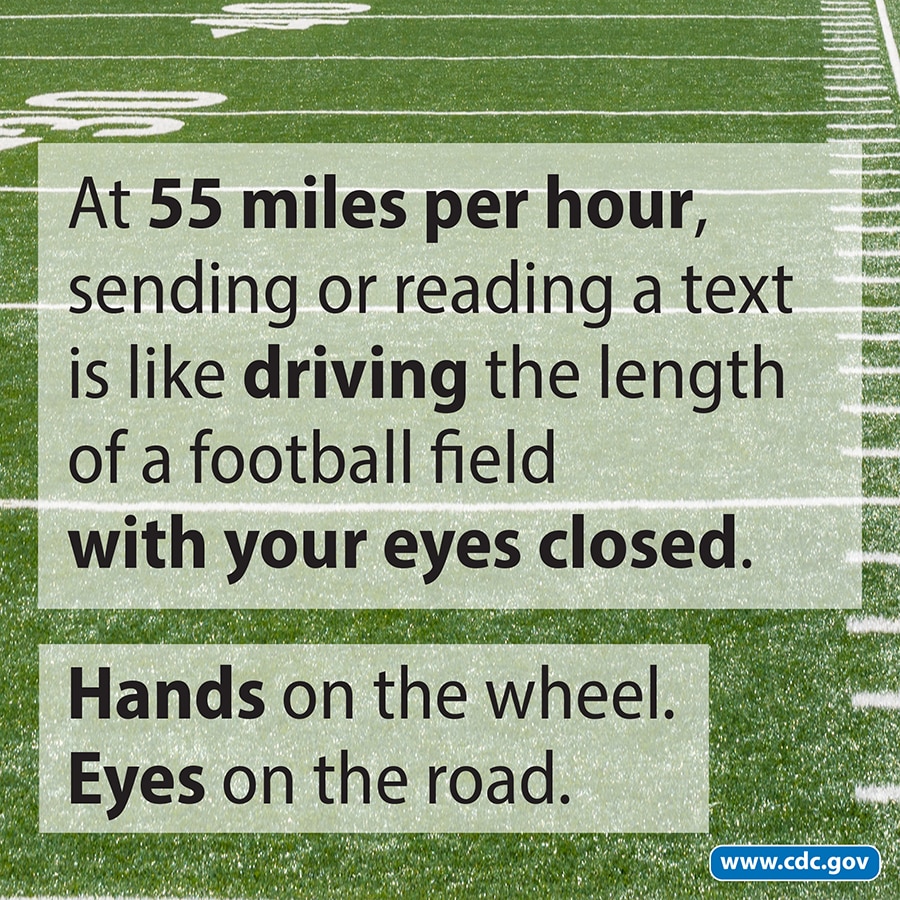![Blue[1] Blue[1]](https://ovhee9.p3cdn1.secureserver.net/wp-content/uploads/2024/04/Blue1.png)
April is Distracted Driving Awareness Month
Here's How You Can Do Your Part
This past week I drove my family out of town in our SUV. My daughters were on Spring Break and we were taking a short trip for some family time.
While we were still in Hampton Roads traveling on a busy highway, my daughters, bored with their ride, started counting the number of vehicles they noticed swerving or moving erratically.
The girls counted 25 of these swerving drivers within ten minutes before stopping their count. They noticed these 25 drivers either 1. holding – and looking at the screen of their cell phone; 2. reaching down for something in their vehicle’s center console; 3. holding some food and attempting to eat; and 4. one driver pulling off a sweatshirt/hoodie over their head while driving about 45 mph.
All of the swerving vehicles were moving between 45 mph and 60 mph. Some of the vehicles were speeding as they passed us. All of the drivers of the swerving vehicles were busy. But they were not busy looking ahead. Not busy looking in their side and rear-view mirrors. Not busy steering their vehicle to keep in the center of their travel lane. And definitely not busy taking enough care to not endanger people in their vehicles crowding the highway as everyone continued to different destinations.
The Centers for Disease Control and Prevention dedicate part of their resources and a portion of their website to transportation safety. Visitors can read information on automobile safety, passenger safety, and even information concerning road travel in other countries across the globe.
Another issue hosted on the CDC’s Transportation Safety pages is distracted driving.
With the introduction of car radios, mobile phones, Bluetooth, and CarPlay, there has been an 11% increase in fatal distraction-affected crashes between 2020 and 2021.
However, distracted driving is not only defined by the phone in our hands when we drive.
According to the CDC, there are three types of distraction:
- Visual: taking your eyes off the road
- Manual: taking your hands off the wheel
- Cognitive: taking your mind off driving
At 55 miles per hour, sending or reading a text is like driving the length of a football field with your eyes closed. Hands on the wheel. Eyes on the road. www.cdc.gov
At any moment your attention is torn from the road in front of you, and the risk of a distracted driving accident grows.
In Hampton Roads alone, distracted driver-related crashes made up 19.1% of all crashes in Hampton Roads between 2017 and 2021. Distracted driving is one of the big 4 behavioral-related crash patterns. Others include alcohol use, speeding, and neglecting to wear a seatbelt.
Behaviors can be preventable, and it’s time for Hampton Roads to #JustDrive. Here’s how you can do your part to spread awareness:
Visit & Share These Websites:
- National Highway and Traffic Safety Administration: April is Distracted Driving Awareness Month
- Centers for Disease Control and Prevention: Transportation Safety: Distracted Driving
- National Safety Council: Motor Vehicle Safety Issues: Distracted Driving
Throughout April, Slaughter & Lupton Law will be sharing content on social media to bring awareness to distracted driving. Follow the links below to keep up with S&L’s safety initiatives.
If you or a loved one have been affected by distracted driving injuries, fill in the questionnaire below to get in contact with our legal team and receive the compensation you deserve.
Your Journey to Justice Starts With Us
Contact Slaughter & Lupton Law, PLLC today for a free consultation.
Let our Personal Injury Attorneys be your trusted legal advocates.




